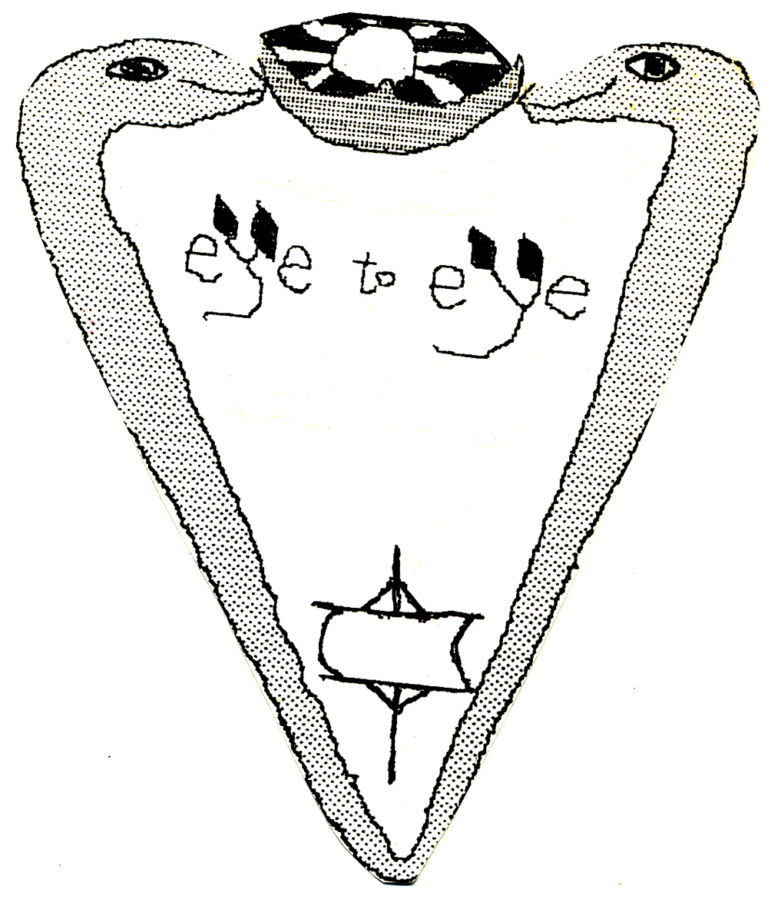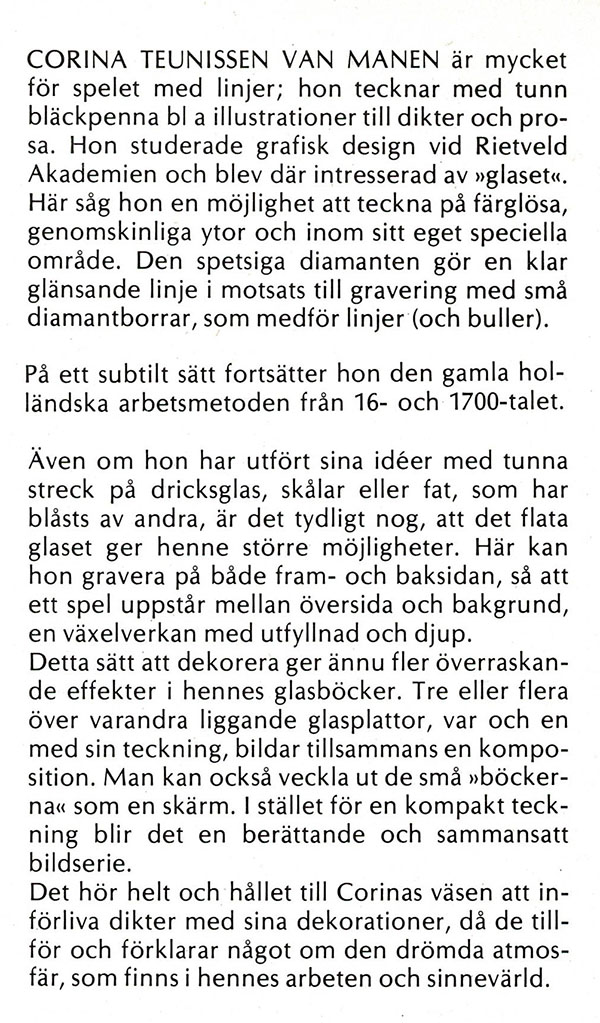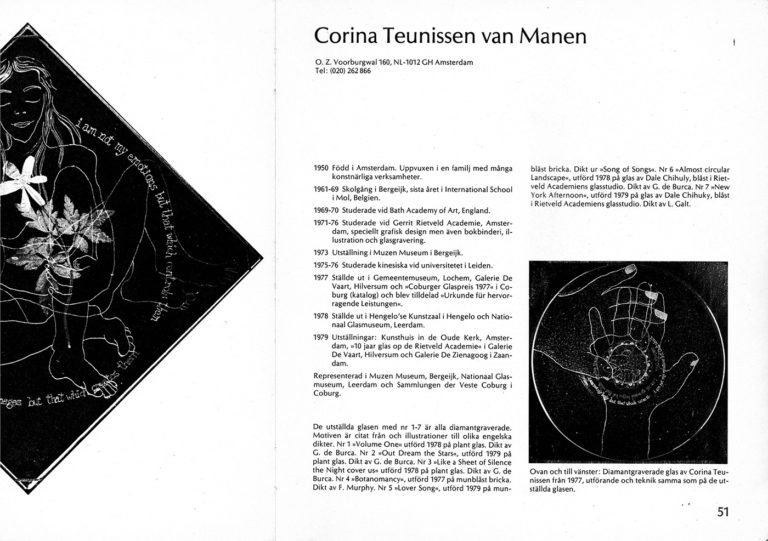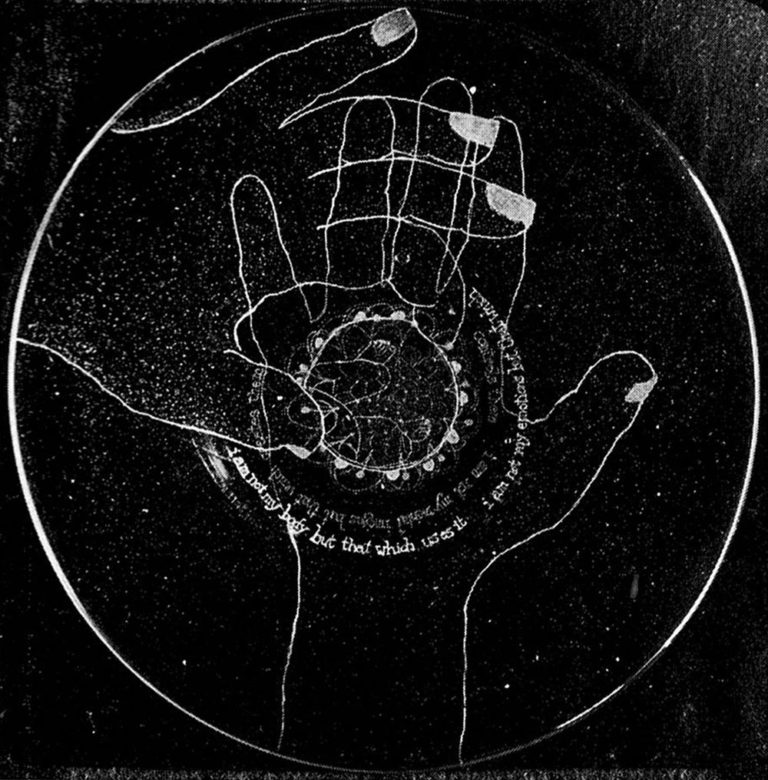CORINA TEUNISSEN VAN MANEN är mycket för spelet med linjer; hon tecknar med tunn bläckpenna bl a illustrationer till dikter och prosa. Hon studerade grafisk design vid Rietveld Akademien och blev där intresserad av »glaset«. Här säg hon en möjlighet att teckna pà färglösa, genomskinliga ytor och inom sitt eget speciella omräde. Den spetsiga diamanten gör en klar glänsande linje i motsats till gravering med smá diamantborrar, som medför linjer (och buller).
Pà ett subtilt sätt fortsätter hon den gamla holländska arbetsmetoden frän 16- och 1700-talet.
Även om hon har utfört sina idéer med tunna streck pà dricksglas, skälar eller fat, som har blästs av andra, är det tydligt nog, att det flata glaset ger henne större möjligheter. Här kan hon gravera pà bàde framoch baksidan, sà att ett spel uppstär mellan översida och bakgrund, en växelverkan med utfyllnad och djup.
Detta sätt att dekorera ger ännu fler överraskande effekter i hennes glasböcker. Tre eller flera över varandra liggande glasplattor, var och en med sin teckning, bildar tillsammans en komposition. Man kan ocksà veckla ut de smà »böckerna« som en skärm. I stället för en kompakt teckning blir det en berättande och sammansatt bildserie.
Det hör helt och hallet till Corinas väsen att införliva dikter med sina dekorationer, dà de tillför och förklarar nägot om den drömda atmosfär, som finns i hennes arbeten och sinnevärld.
—
CORINA TEUNISSEN VAN MANEN is very much for the game with lines; she draws with a thin ink pen, including illustrations for poems and prose. She studied graphic design at the Rietveld Academy and became interested in “glass”. Here she says is an opportunity to draw on colourless, transparent surfaces and within her own special area. The pointed diamond makes a clear shiny line as opposed to engraving with small diamond drills, which results in matt lines (and noise).
In a subtle way, she continues the old Dutch working method from the 16th and 18th centuries.
Although she has carried out her ideas with thin lines on drinking glasses, saucers and plates, which have been blown by others, it is clear enough that the flat glass gives her greater opportunities. Here she can engrave on both the front and the back, so that a play arises between the top and background, an interaction with movement and depth.
This way of engraving gives even more surprising effects in her glass books. Three or more superimposed glass plates, each with its own drawing, together form a composition. You can also unfold the small “books” as a screen. Instead of a compact drawing, it will be a narrative and composite series of pictures.
It is entirely up to Corina’s essence to incorporate poems with her decorations, as they add and explain something about the dreamlike atmosphere that exists in her works and world of her mind.



